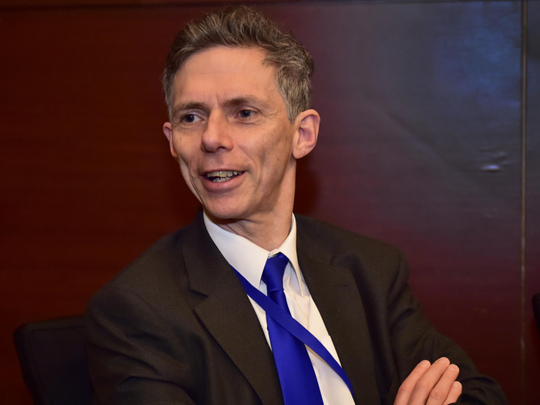
DUBAI
Railway specialist Nigel Harris is one of the foremost experts in modelling the potential impacts of a hyperloop such as the one proposed to link Dubai and Abu Dhabi.
Harris, Managing Director of The Railway Consultancy Ltd, has conducted a study of a proposed hyperloop system connecting Stockholm, Sweden, and Helsinki, Finland.
But he’s clear that the reduction in travel time a hyperloop is likely to bring — the estimate for a Dubai-Abu Dhabi journey is just 12 minutes — makes it very difficult to predict its economic and social impact.
“If we reduce journey times on a railway by 1 per cent, I’m pretty sure I can estimate for you the demand impact,” Harris told delegates to the Modelling World conference at The Address, Dubai Marina.
“But we know that we understand big changes much less, and for changes like this we know almost nothing. Arguably there’s [the chance to] change jobs. What about business impacts? What will happen to investments? How will people spend their money? We have a lot of very basic thinking to do.”
He added: “There are potentially some rather odd variables. We can’t use parameters from elsewhere and, sadly, we haven’t been let loose on the populations of Sweden or Finland to go and ask them lots of interesting things.
“We also need scenarios, because we can’t exactly describe yet what a hyperloop is going to provide. We know roughly what it looks like, but the technology is still being developed.”
With such a lack of information, standard mathematical tools become less reliable. “We could use arc elasticities, but that just makes us less wrong,” he said. “It’s still only an indicative answer.”
In an interview after his presentation, Harris said his studies of the Scandinavian project did allow some general ideas of what effects a UAE hyperloop might have.
“I think one changes economic behaviour, in a sense that land-use patterns change. Journeys now that people could make, but don’t make [because of excessive travel time], if you can do that in 10 minutes, the fact that your business is at one end of Dubai and mine’s at the other, we might end up doing more business together ... because this distance decay, the hassle of transport, goes away to an extent.”
He said the location of stations would also impact land values around them, with a likely growth of business communities nearby, which in turn would prompt increased economic activity.
But he also pointed out that hyperloops took time to reach full speed, and stations could not be too close together. Depending on design and pricing, they may not be a substitute for mass transit, but should form part of a carefully designed transport infrastructure.












